In the competitive automotive market, SUVs are rapidly gaining popularity. In this article, we will compare two significant contenders in the hybrid segment: the Kia Niro and the Renault Symbioz. Both vehicles offer eco-friendly technology without compromising performance, making them ideal choices for environmentally conscious buyers. Let’s delve into their technical specifications, innovations, and overall driving experience.
Kia Niro vs Renault Symbioz – Which model is better for everyday use?
Both models have their strengths – but which one suits you more?
Compare performance, efficiency, price and space directly: Kia Niro or Renault Symbioz?
Design and Dimensions
Both the Kia Niro and Renault Symbioz boast a contemporary SUV design with sleek lines and functional dimensions. The Niro measures 4420 mm in length, 1825 mm in width, and 1545 mm in height, providing a spacious cabin and ample storage with a trunk capacity of 451 liters.
On the other hand, the Symbioz is slightly shorter at 4413 mm, with a width of 1797 mm and a height of 1575 mm. Despite its compact size, it offers a generous trunk space of 492 liters, slightly more than that of the Niro. This advantage makes the Symbioz a practical option for families or those needing extra cargo space.
Powertrain and Performance
The Kia Niro comes with two hybrid powertrain options: a Full Hybrid and a Plug-in Hybrid, delivering a power output of 129 HP and 171 HP, respectively. The 1.6-liter engine offers a torque of 265 Nm and accelerates from 0-100 km/h in 11.3 seconds for the Full Hybrid variant, while the Plug-in Hybrid achieves it in just 10.4 seconds.
In comparison, the Renault Symbioz features a Full Hybrid engine producing 143 HP and a torque of 250 Nm. It also has a 0-100 km/h acceleration time of 10.6 seconds, making it competitive in performance. While both vehicles are equipped with automatic transmissions, the Niro utilizes a dual-clutch setup that enhances driving efficiency and responsiveness.
Fuel Efficiency and Emissions
The pursuit of efficiency is pivotal in hybrid vehicles. The Kia Niro stands out with its excellent fuel consumption of as low as 4.4 L/100 km for the Full Hybrid variant and 0.8 L/100 km when considering its electric range of 65 km. In terms of emissions, the Niro excels with CO2 figures starting at 100 g/km, showcasing its commitment to a greener planet.
The Renault Symbioz, while still efficient, has a slightly higher fuel consumption of 4.8 L/100 km, which may be a consideration for the eco-conscious driver. Its emissions are rated at 109 g/km. Both vehicles fall within the CO2 efficiency class C, but the Niro maintains a slight advantage in sustainability.
Interior and Technology
Inside, the Kia Niro offers a modern, user-friendly infotainment system with an emphasis on connectivity and convenience. It is designed to accommodate five passengers comfortably, which adds to its appeal as a family vehicle.
The Renault Symbioz, also seating five, integrates cutting-edge technology, including advanced driver-assistance systems that enhance safety and ease of driving. Both vehicles feature high-quality materials and a blend of comfort and practicality, ensuring an enjoyable ride for all passengers.
Conclusion
The decision between the Kia Niro and Renault Symbioz ultimately comes down to personal preferences. The Niro impresses with its fuel efficiency, electric range, and greater power options, making it a versatile choice for a wide array of drivers. The Symbioz, however, captivates with its innovative technology, spacious interior, and slightly better trunk capacity.
Regardless of choice, both the Kia Niro and Renault Symbioz represent significant strides forward in the hybrid SUV market, catering to environmentally conscious consumers who seek a blend of performance, technology, and practicality. Whether you prioritize efficiency over luxury or vice versa, both vehicles promise to meet modern demands for sustainability in style.
Here’s where it gets real: The technical differences in detail
Costs and Efficiency:
When it comes to price and running costs, the biggest differences usually appear. This is often where you see which car fits your budget better in the long run.
Renault Symbioz has a somewhat advantage in terms of price – it starts at 24400 £, while the Kia Niro costs 29100 £. That’s a price difference of around 4706 £.
Fuel consumption also shows a difference: Kia Niro manages with 2.40 L and is therefore clearly more efficient than the Renault Symbioz with 4.50 L. The difference is about 2.10 L per 100 km.
Engine and Performance:
Power, torque and acceleration say a lot about how a car feels on the road. This is where you see which model delivers more driving dynamics.
When it comes to engine power, the Kia Niro has a somewhat edge – offering 180 HP compared to 158 HP. That’s roughly 22 HP more horsepower.
In acceleration from 0 to 100 km/h, the Renault Symbioz is minimal quicker – completing the sprint in 9.10 s, while the Kia Niro takes 9.90 s. That’s about 0.80 s faster.
In terms of top speed, the Kia Niro performs slight better – reaching 185 km/h, while the Renault Symbioz tops out at 180 km/h. The difference is around 5 km/h.
Both models offer the same torque – 265 Nm.
Space and Everyday Use:
Cabin size, boot volume and payload all play a role in everyday practicality. Here, comfort and flexibility make the difference.
Both vehicles offer seating for 5 people.
In curb weight, Renault Symbioz is barely noticeable lighter – 1436 kg compared to 1474 kg. The difference is around 38 kg.
In terms of boot space, the Renault Symbioz offers distinct more room – 576 L compared to 451 L. That’s a difference of about 125 L.
In maximum load capacity, the Renault Symbioz performs somewhat better – up to 1682 L, which is about 237 L more than the Kia Niro.
When it comes to payload, Kia Niro to a small extent takes the win – 466 kg compared to 379 kg. That’s a difference of about 87 kg.
Who comes out on top?
Overall, the Kia Niro shows itself to be outperforms in nearly all aspects and secures the title of DriveDuel Champion.
It convinces with the more balanced overall package and proves to be the more versatile choice for everyday use.
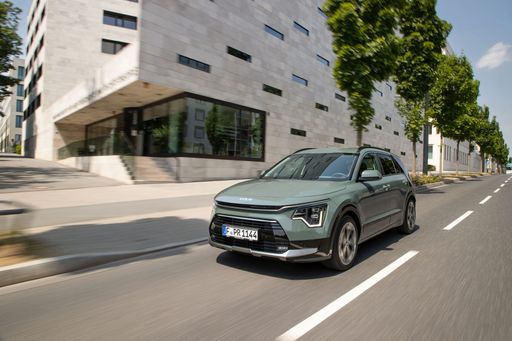 @ Kia Corporation
@ Kia Corporation
Kia Niro
Kia Niro
The Kia Niro presents itself as a versatile and eco-friendly SUV, blending a stylish design with advanced hybrid technology. Its spacious interior offers comfort and practicality, making it ideal for both city driving and longer journeys. With a focus on efficiency and sustainability, the Niro is a compelling choice for environmentally conscious drivers.
details @ Kia Corporation
@ Kia Corporation
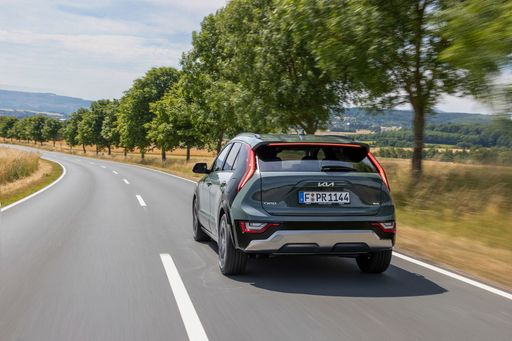 @ Kia Corporation
@ Kia Corporation
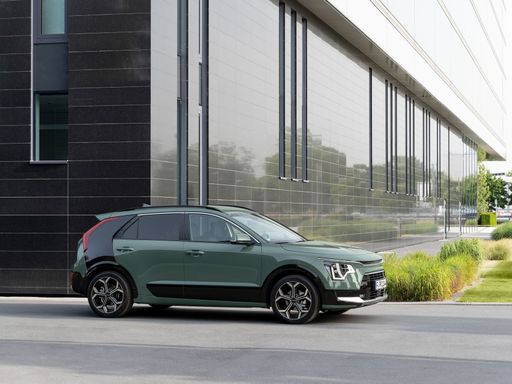 @ Kia Corporation
@ Kia Corporation
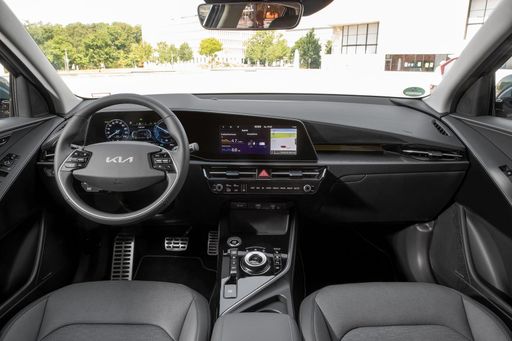 @ Kia Corporation
@ Kia Corporation
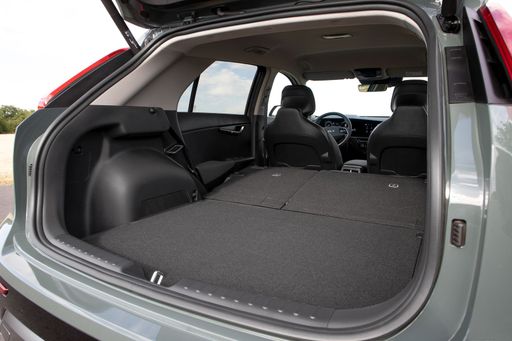 @ Kia Corporation
@ Kia Corporation
Renault Symbioz
The Renault Symbioz is an innovative concept car that explores the future of autonomous and connected driving. Its design seamlessly integrates indoor living space features with cutting-edge automotive technology, creating a comfortable and modern environment. The Symbioz highlights Renault's vision of an eco-friendly and connected mobility experience, paving the way for the next generation of smart vehicles.
details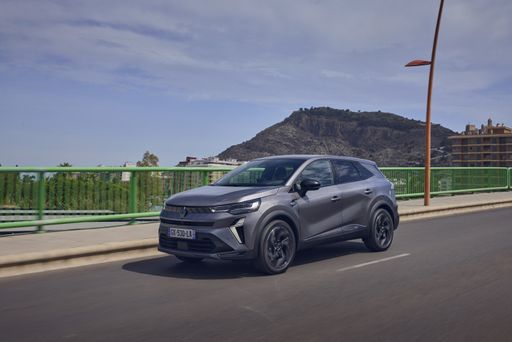 @ Renault Group Media
@ Renault Group Media
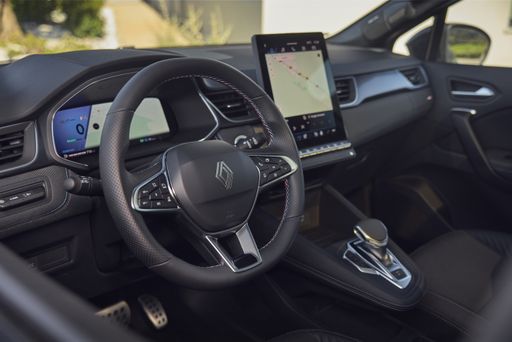 @ Renault Group Media
@ Renault Group Media
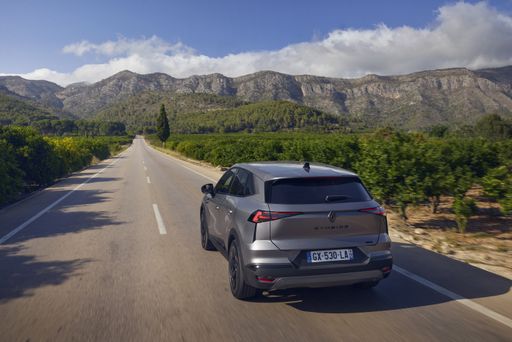 @ Renault Group Media
@ Renault Group Media
 @ Kia Corporation
@ Kia Corporation
|
 @ Renault Group Media
@ Renault Group Media
|
|
|
|
Costs and Consumption |
|
|---|---|
|
Price
29100 - 38600 £
|
Price
24400 - 30700 £
|
|
Consumption L/100km
2.4 - 4.9 L
|
Consumption L/100km
4.5 - 5.9 L
|
|
Consumption kWh/100km
-
|
Consumption kWh/100km
-
|
|
Electric Range
57 - 62 km
|
Electric Range
-
|
|
Battery Capacity
1.3 - 11.1 kWh
|
Battery Capacity
-
|
|
co2
53 - 111 g/km
|
co2
102 - 134 g/km
|
|
Fuel tank capacity
37 - 42 L
|
Fuel tank capacity
48 L
|
Dimensions and Body |
|
|---|---|
|
Body Type
SUV
|
Body Type
SUV
|
|
Seats
5
|
Seats
5
|
|
Doors
5
|
Doors
5
|
|
Curb weight
1474 - 1594 kg
|
Curb weight
1436 - 1544 kg
|
|
Trunk capacity
348 - 451 L
|
Trunk capacity
492 - 576 L
|
|
Length
4420 mm
|
Length
4413 mm
|
|
Width
1825 mm
|
Width
1797 mm
|
|
Height
1545 mm
|
Height
1575 mm
|
|
Max trunk capacity
1342 - 1445 L
|
Max trunk capacity
1582 - 1682 L
|
|
Payload
466 kg
|
Payload
376 - 379 kg
|
Engine and Performance |
|
|---|---|
|
Engine Type
Full Hybrid, Plugin Hybrid
|
Engine Type
Petrol MHEV, Full Hybrid
|
|
Transmission
Automatic
|
Transmission
Manuel, Automatic
|
|
Transmission Detail
Dual-Clutch Automatic
|
Transmission Detail
Manual Gearbox, Automatic Gearbox
|
|
Drive Type
Front-Wheel Drive
|
Drive Type
Front-Wheel Drive
|
|
Power HP
138 - 180 HP
|
Power HP
140 - 158 HP
|
|
Acceleration 0-100km/h
9.9 - 11.4 s
|
Acceleration 0-100km/h
9.1 - 11.2 s
|
|
Max Speed
170 - 185 km/h
|
Max Speed
180 km/h
|
|
Torque
265 Nm
|
Torque
250 - 265 Nm
|
|
Number of Cylinders
4
|
Number of Cylinders
4
|
|
Power kW
102 - 132 kW
|
Power kW
103 - 116 kW
|
|
Engine capacity
1580 cm3
|
Engine capacity
1333 - 1789 cm3
|
General |
|
|---|---|
|
Model Year
2025
|
Model Year
2025
|
|
CO2 Efficiency Class
C, B
|
CO2 Efficiency Class
D, C
|
|
Brand
Kia
|
Brand
Renault
|
Is the Kia Niro offered with different drivetrains?
The Kia Niro is available as Front-Wheel Drive.
The prices and data displayed are estimates based on German list prices and may vary by country. This information is not legally binding.
